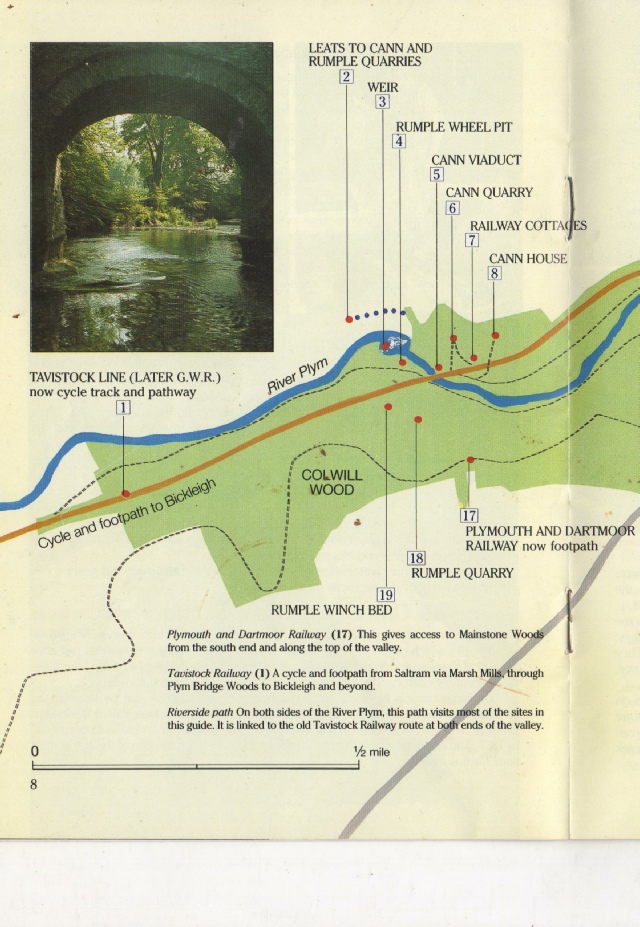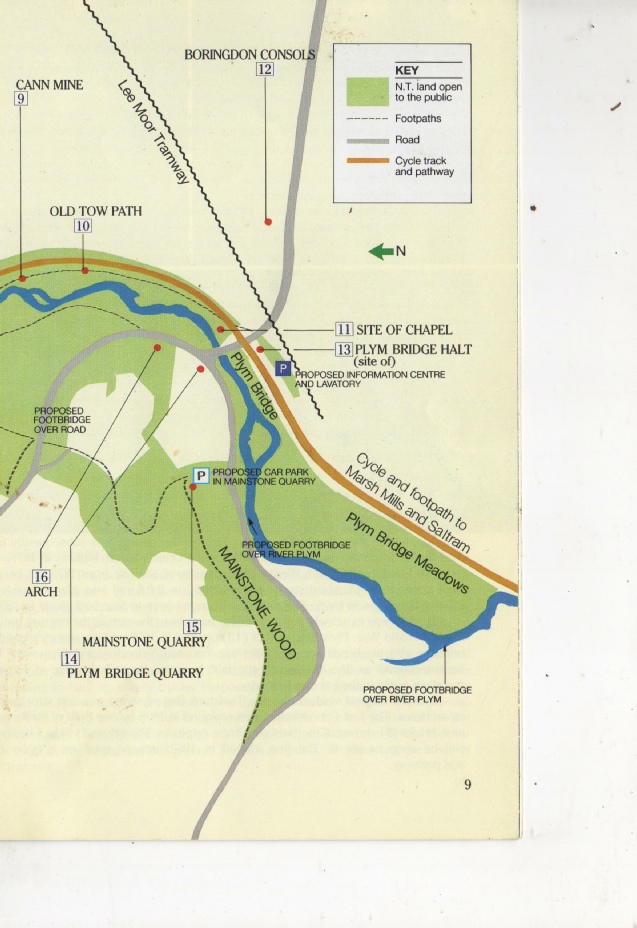


There is known to have been a Plym Bridge here since 1238. The first lay on a rough track linking the important monastic centres of Plympton - an important town long before Plymouth existed - and Tavistock.The present eighteenth-century bridge is built on the remains of an earlier flood�damaged bridge, the arches of which are still visible.The medieval Chapel of St Mary the Virgin (II) stood beside the bridge. Pope Nicholas V, writing to the Prior of Plympton in 1450, mentioned the many pilgrims visiting the chapel and miracles witnessed there.The chapel disappeared towards the end of the nineteenth-century and now only a small arch (16) remains beside the road on the other side of the river. This is believed to be connected with the chapel and contains a broken slate shelf which probably once held a votive offering such as a statue of a saint.The first of a number of weirs (3) was built near Cann Quarry in the eighteenth�century by John Parker, Baron Boringdon of Boringdon Hall. His descendants were later to live at Saltram House, enjoying high governmental office and ennobled as the Earls of Morley. A leaf from the weir provided water to run two corn mills at Marsh Mills. The weir also incorporated a salmon trap which led to disputes with landowners upstream who were deprived of salmon.In the nineteenth-century the Plym Bridge area was the scene of intense industrial activity as the picture of Cann Quarry, above, shows. It contains the remains of several quarries, quarry workers’ cottages, a small lead-silver mine, a canal and three old railway lines. The industrialisation was due to a number of factors; the proximity to Plymouth and its harbours; the river Plym and its tributaries which powered the waterwheels for pumping, crushing and grinding; and the tock in the valley. This is predominantly Upper Devonian slate, but there is also a fine-grained rock of volcanic origin, known as diorite to geologists and ‘elvan’ to quarrymen. The face of Cann Quarry shows an example of a diorite dyke: a fissure of the stone running through slate. Both slate and elvan were quarried extensively near Plym Bridge.There are also seams of metallic ores, including lead, copper, silver, tin, iron and arsenic, all of which have been worked.


